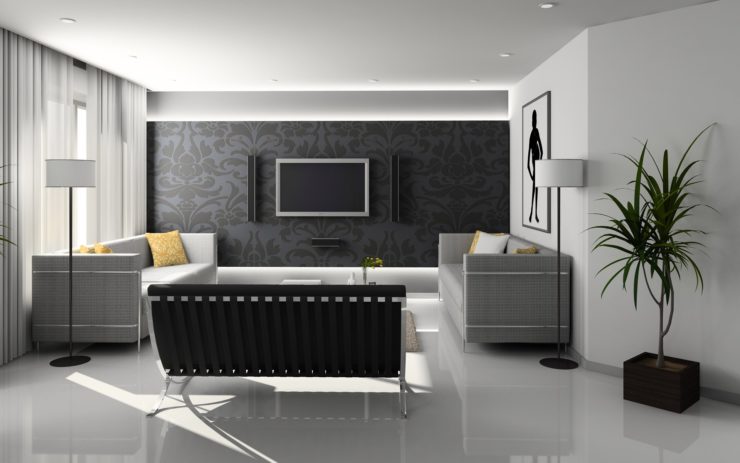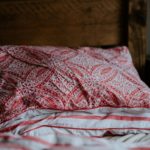An eternal war is waged between two apartment design camps. One side praises the advantages of painting walls with paint, the other insists that the best solution is wallpaper . Which of them is right? Is it even won here? Let’s look at it together.
Wallpaper for the wall – advantages
The biggest advantage of wall wallpapers is the number of patterns and colors that we have to choose from. No paint can give us such a range of possibilities. Starting with colors of different intensity (from pastel to intense), through a variety of patterns (floral, animal, fairy-tale motifs, rich decorations) to various textures (completely smooth and convex wallpapers).
- https://badzsoba.com.pl/klinika-ortopedyczna/
- https://www.ponadto.com.pl/jakie-jest-dzienne-zapotrzebowanie-na-witamine-c/
- https://www.iloggo.pl/serwis-falownikow/
An additional advantage of wall wallpapers are their thermoregulatory and acoustic properties. Their structure helps to maintain a constant temperature in the room. The wallpaper should also be the choice of people who want to hear less sounds from their neighbors.
The universality of wallpapers is a feature that has been used for generations, and has been improved more and more recently. The variety of materials from which wall murals are made means that we can also use them to protect walls in the kitchen or bathroom, instead of troublesome tiles. It is a great help for people who often change the interior design or love to do it on their own – placing wallpaper on the wall is much easier than installing tiles or mosaics.
Wall paint – pluses
Shops and hypermarkets offer an ever wider choice of wall paint colors. Their offer also includes the production of color from the so-called mixer so that the customer gets the shade he needs the most, and is not a standard color. This gives an incredible opportunity to accurately match the color of the room to your favorite tablecloth or tiles that we have in the bathroom.
The vast advantage of paints is the ease of applying them to the wall. You do not need any specific tools – all you need is a roller, a litter box and some paint foil to protect the floor. The current emulsions are so user-friendly that even without much experience, a satisfactory effect can be obtained. This is absolutely the opposite of wall wallpapers, where the precision of installation determines the final effect, and a novice user will use a lot of material before learning how to do it correctly.
The paint is friendly to all surfaces. Even if our walls are not completely even and the floors do not keep the perfect level. Painting the wall with paint will certainly not emphasize these shortcomings.
Cons of wall wallpapers
The installation of wallpaper is a serious obstacle. We have to spend a lot of time on precise measurements, drawings, cutting out, and finally – the installation of wallpaper on the wall. In the case of paint – we choose the color, buy a product with a roller and we can get to work!
Some types of wallpaper are difficult to remove without damaging the surface of the wallpaper itself. The most vulnerable to this are those that have a rough texture and are made of paper. So if we want to use wallpaper in a place exposed to dirt or splashing, it is best to use vinyl wallpapers with a slippery, smooth surface.
Are you bored of the wallpaper? Do you want to replace it with another one or paint your wall? First, a time-consuming and cumbersome disassembly awaits you. Much depends on the glue used, but if the wallpaper sticks to the wall properly, it will take hours to remove. This can keep you from changing and, as a result, you will struggle in your own home.
What are the disadvantages of paints?
With the use of paint, we will never achieve such patterned effects as with wall wallpapers . Making the simplest stripes in two colors on the entire wall takes hours of precisely gluing the masking tape evenly and carefully covering the wall with paint. Ornaments, changing the texture of the wall are possible only by interfering with the structure itself by applying the plaster properly. In the event that the idea is wrong or we get it, changes to the initial state will be very difficult to achieve.
Streaks, splashes, dots on the floor – these symptoms are known to anyone who has tried to paint a room on their own at least once. It will take us long minutes to carefully cover all electrical sockets, furniture or the ceiling – and the paint will find a way to outsmart the painter’s tape or foil spread on the carpet. Removing some paints from wooden or varnished surfaces can be extremely difficult. And an accidentally painted ceiling with a different color will need to be painted separately in its own color.
The paints are also not conducive to the cleanliness of the person applying them. Working clothes are a must here. Even the long sleeves of the blouse and the ankle-length legs will not protect us from accidentally imprinting paint on our skin. Most often, the face and hair fall victim to small drops that flake off the wall when it is painted. This is an inevitable effect, so a thorough bath is then necessary, combined with the unpleasant scrubbing of the body. This obstacle is especially important for people with skin allergies to some paint ingredients.






